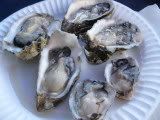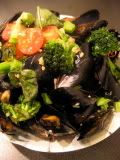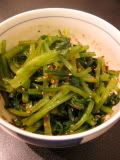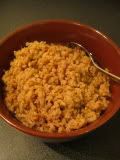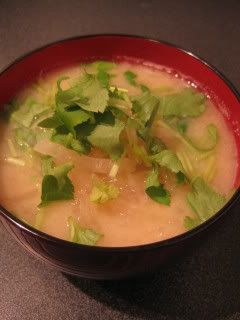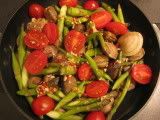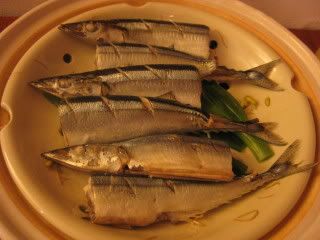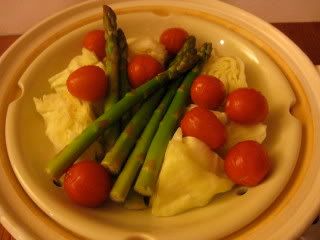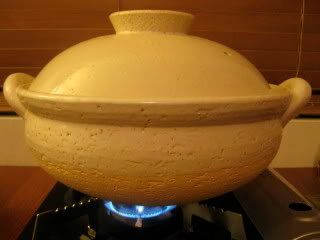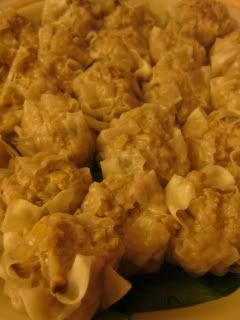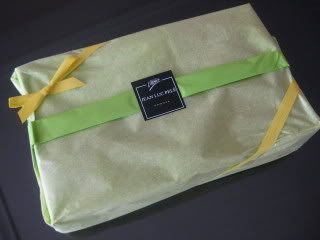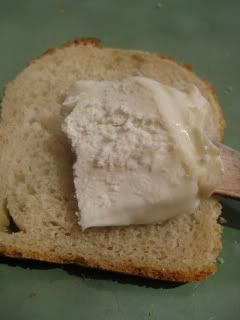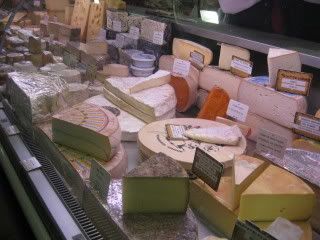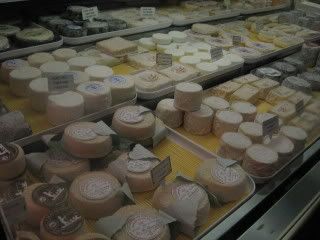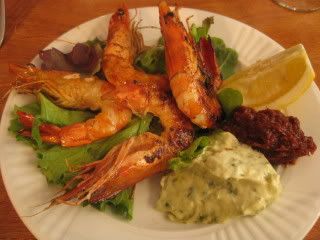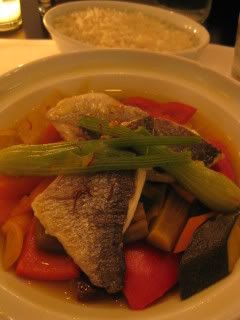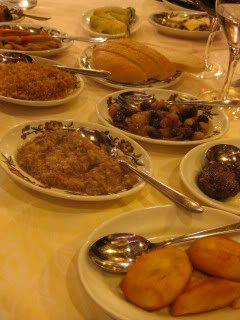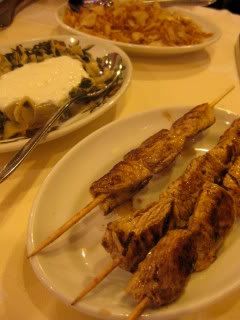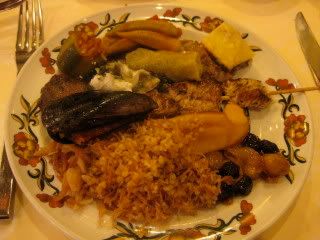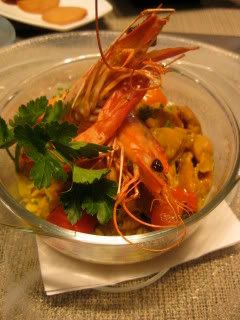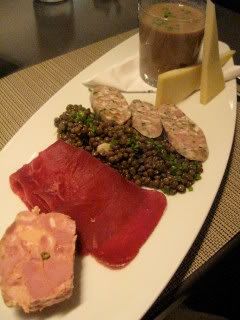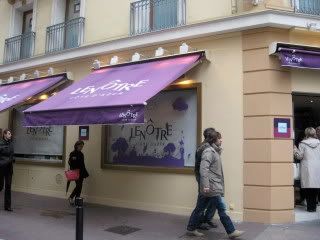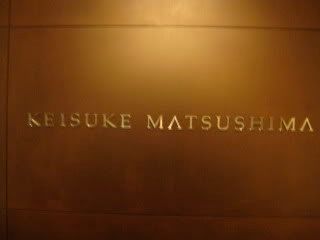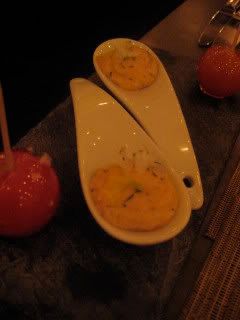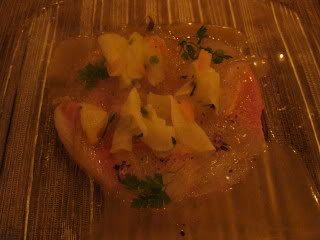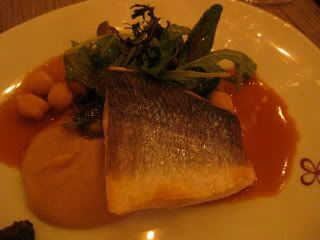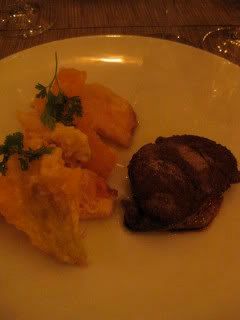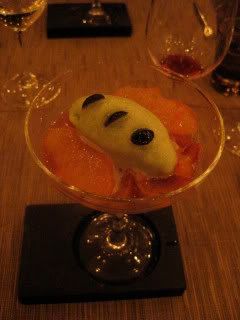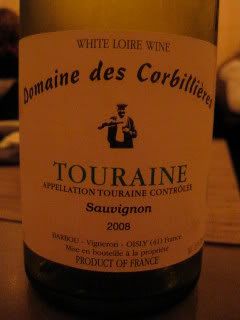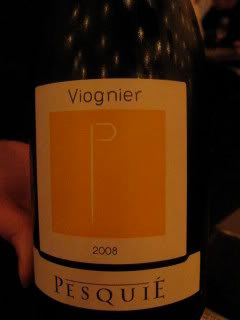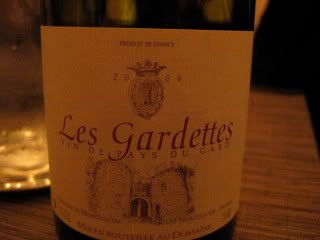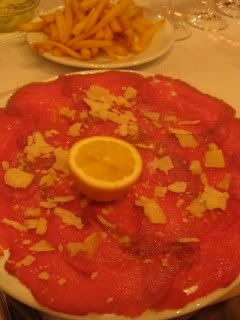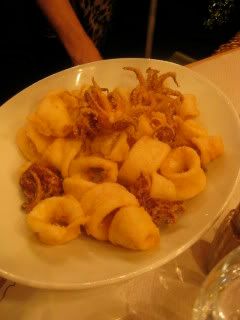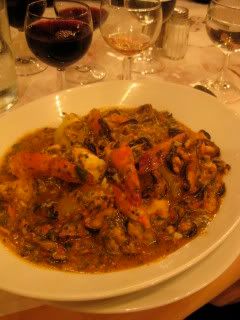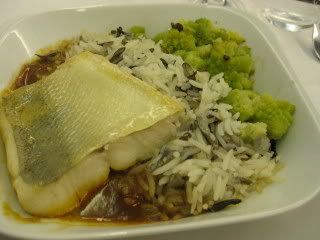I was in Cannes, France last week on a business trip again (this was my 6th time there). I spent such a hectic week, but go to taste some really nice food, too.
The weather was not very welcoming this time. It rained almost every day and it was cold, too.
On Sunday (my only freetime), I went to the farmers market to pick up some cheese, etc.
This vendor is a local cheese producer. I picked up some of their homemade goat cheese.
I visited my favorite macaron shop, Jean-Luc Pele a couple of times during my stay. Their marron (chestnut) macaron is a killer.
Local oysters and prawns (a la plancha) for lunch.
Seabass and Vegetable Tagine at Fouquet's at Majestic Hotel. Instead of cous-cous, I requested a side of rice (it was jasmine rice).
Armenian dinner with colleagues. They bring dozens of dishes to the table.
LENOTRE has really nice lunch menu. One day, I had the curry prawns with spiced rice (the rice was very good!), and the other day, I had duck confit with foie gras, with lentil salad and mushroom cream soup. Both were really excellent.
The highlight of this trip was definitely the dinner at KEISUKE MATSUSHIMA in Nice!!
We drove all the way to Nice just for this dinner. Keisuke-san is a super-talented chef from Japan. He moved to France 11 years ago and he worked his way out to become one of the top young French chefs. He was awarded with Michelin 1 star when he was only 27 years old. He is now 31 and is scheduled to open his new French restaurant in Tokyo in May. He is also opening a home-style Japanese restaurant in Nice this year. We chatted a while and he said with the new Japanese restaurant, he wants to serve Oyako-don (chicken and egg rice bowl) with the chicken from Bresse and eggs from the local premium farm!! I really want to experience it.
The dinner at Keisuke Matsushima was the best dining experience I had in my all last trips Cannes/ Nice. We did his "omakase" dinner and with the wine pairing, it was only about 110 euros. His dishes were so sincere and every bite was magical. They are beautifully crafted modern-style French dishes with the premium quality local ingredients. My favorite was the tai snapper carpaccio!!
The restaurant was packed the night (it was Tuesday) we went there. The place was so unpretentious and the service was very personal. It made me almost feel like I was in California!
I thought Keisuke-san was such a charismatic person, yet he is so down-to-earth and soft-spoken. It should be nothing but his talent and hard work which brought him to this great success. I was really inspired by him and felt like gained so much energy from him, too.
Back in Cannes, the sky got finally clear on the last day.
Ha Gao and Duck Curry from Jade (Vietnamese restaurant).
Beef Carpaccio, Calamari Fries, and Seafood Stew.
Airplane meal...perch with red wine sauce, with romanesco and rice.
So, I got to eat rice a few times in this trip, but I really missed my donabe rice cooked with Kamado-san!!









